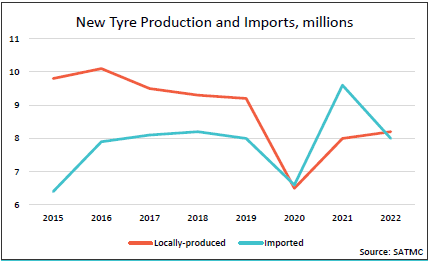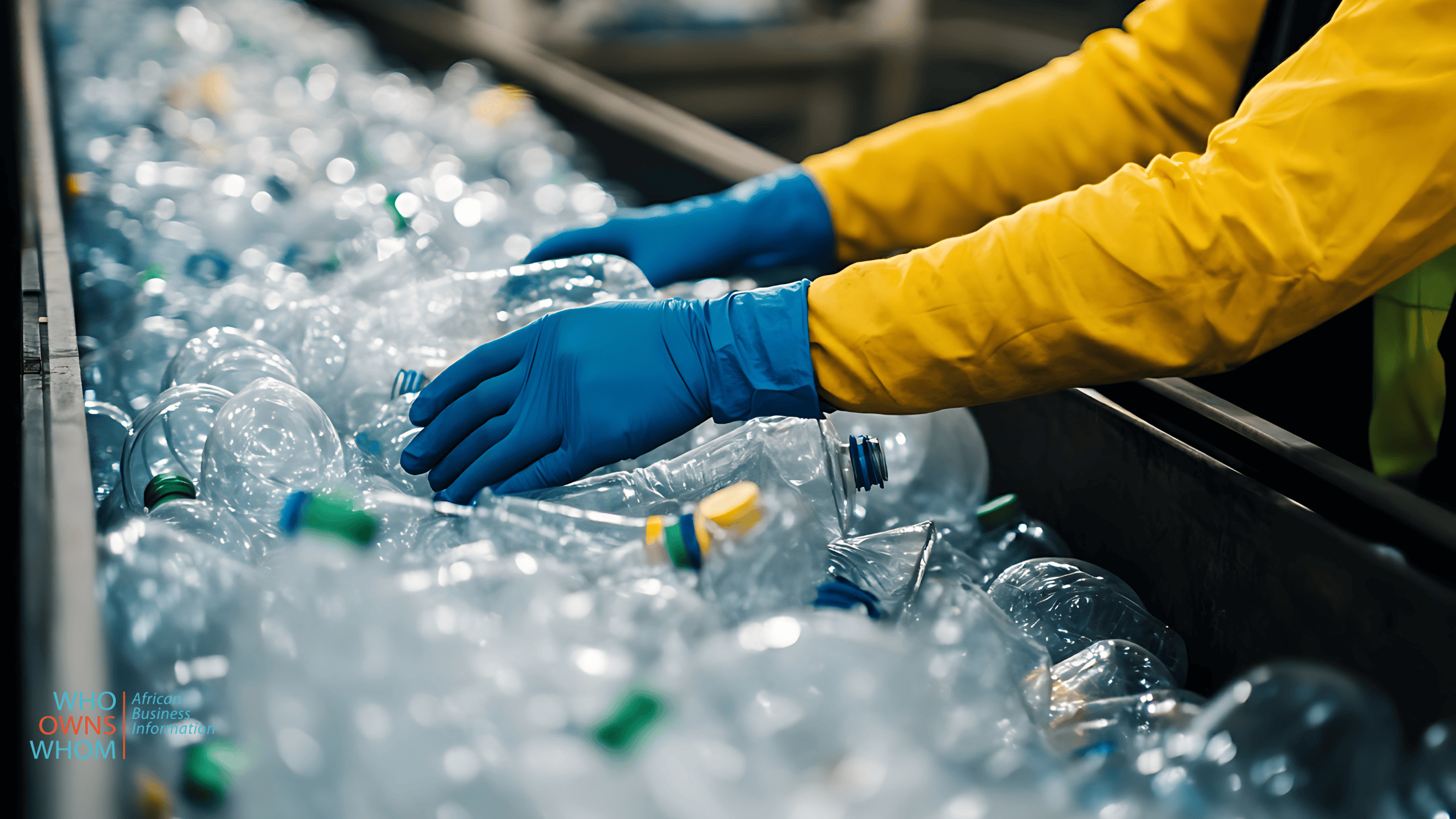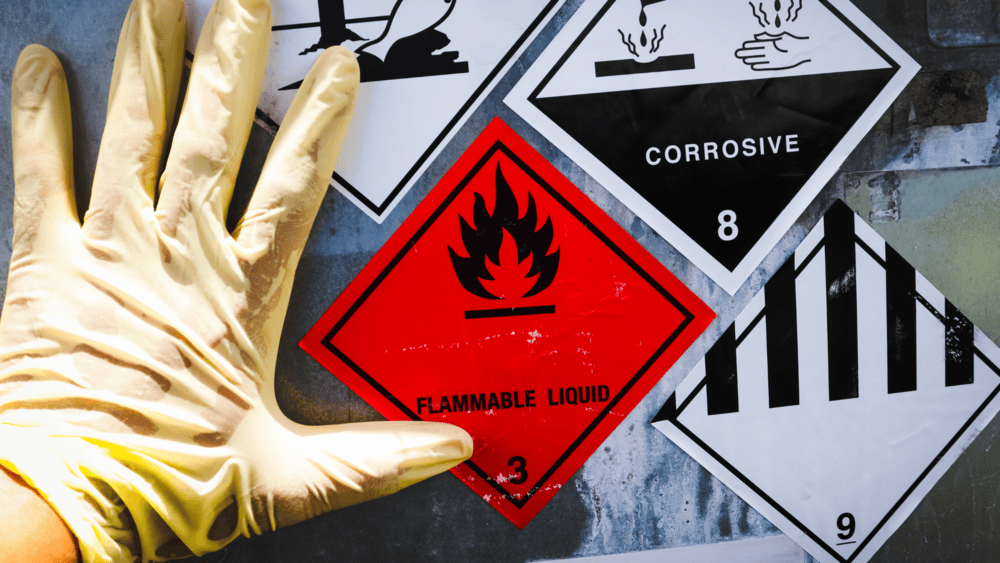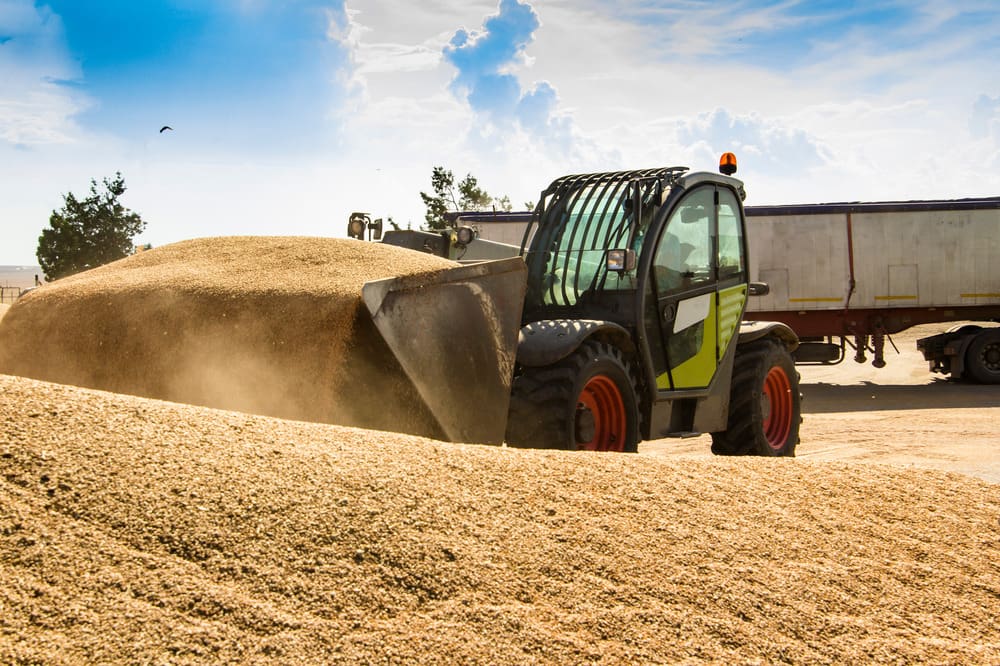Is the Tyre Industry in South Africa running flat?
Introduction
The South African Tyre Manufacture Conference (SATMC), the official industry body and trade association of local tyre manufacturers, reports that the installed production capacity of tyres has declined from 12 million to 10 million from 2018 to 2022, while capacity utilisation has improved from 76.9% to 80.6% over the same period. The pending closure of Goodyear’s plant will cause a further decline in local tyre production capacity in South Africa .
The question is why, especially after a big 70% tariff protection wall was implemented, local production still accounts for only about half of annual tyre consumption in the South African market .
Market Performance & Import Pressure

The Who Owns Whom report , found here, illustrates the performance of the South African tyre industry since 2015, demonstrating the decline of local production and increase in tyre imports . It is worth noting that import statistics likely do not provide the complete picture, as they do not account for illegal and under-invoiced imports.
On 24 July 2025 at the EU-China summit in Beijing, President Xi Jinping was reported to have said that “improving competitiveness cannot rely on building walls and fortresses”. People outside the political sphere in Europe share this view. Bosch CEO Stefan Hartung also warned in June 2025 that Europe is “regulating itself to death … in the field of artificial intelligence”.
The same pertains to South Africa. While arguably faced with different circumstances, the underlying principles of business competitiveness and moderation in regulation are equally relevant.
Local Production & Modernisation
Goodyear is considering leaving South Africa because it cannot compete locally due to high input costs such as electricity, and logistics challenges , with the influx of cheap tyre imports exacerbating the situation.
While it is not so obvious, there has been technological evolution and innovation in the tyre manufacturing industry . A wide variety of tyres and specifications, allowing for comfortable rides at very high speeds, and resistance to breaking when driving in potholes, are now available, offering consumers more options. Run flat tyres were introduced by many car brands, eliminating the need for spare tyres. This option has been adopted by many car brands, despite the tyres being more expensive.
The silent but much heavier electric vehicles , for which phenomenal growth is predicted, will require newer, technologically more advanced EV tyres . The question is whether the South African tyre industry is in a position to compete with the international tyre manufacturers . There will be low local demand given the low EV penetration rate in South Africa in the immediate future.
Regulation & Sustainability
The very high import tariff would help the industry, but at the expense of the consumer, if only the tariff wall can be made watertight. The evidence so far is that it is not. Illegal and under-invoiced imports threaten the sustainability of local manufacturing plants . High tariffs or regulatory costs, such as excise taxes on cigarettes , increase circumvention attempts, which, in the absence of proper enforcement, become successful and nullify the original purpose.
Increasing manufacturing productivity and efficiency, including cost reduction, can improve competitiveness and level the playing field. Progressive deregulation requires closer examination.
Opportunities & Future Growth
The shift to electric vehicles and the consequent need for different tyres creates an opportunity to invest in technologically advanced tyre manufacturing capacity for the EV market .
Competitive pricing realised through lighter but effective regulation can drive demand in the tyre replacement market , which is three times bigger than the OEM tyre market . If the price difference is less steep, stressed consumers who have been enticed to consider illegal, re-treaded, or second-hand tyres may, for safety concerns, contemplate going back to properly specified products.
If government intervene by lightening the regulatory burden, it could insist, as a quid pro quo, on a reduction in tariff protection levels . There needs to be clarity on the difference between tariff protection and anti-dumping measures , as they serve different purposes.
Contact us to access WOW's quality research on African industries and business
Contact UsRelated Articles
BlogCountries ManufacturingSouth Africa
South Africa’s Plastic Manufacturing Industry: Innovation, sustainability and investment opportunities
Contents [hide] Plastic is a versatile, cost-effective, and useful product with a wide array of applications in almost every industry, from food to transportation, packaging, and manufacturing. Technological innovations and...
BlogCountries ManufacturingSouth Africa
Manufacture of basic chemicals in South Africa, a strategic pillar for industrial development
Contents [hide] Basic chemicals, or commodity chemicals, are fundamental building blocks used for making complex products. They are typically produced in large volumes, used as raw materials, and are generally...
BlogCountries ManufacturingSouth Africa
The Flour and Grain milling industry – from field to table
Contents [hide] The flour and grain mill products manufacturing industry is crucial to the South African economy and livelihoods. Staple foods like maize and wheat are essentially a commodity. They...





